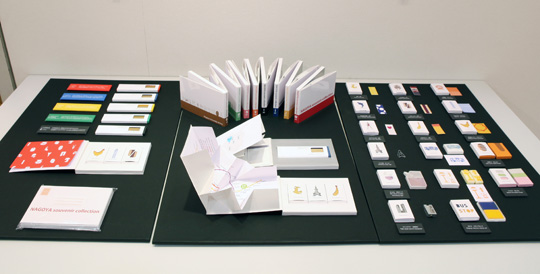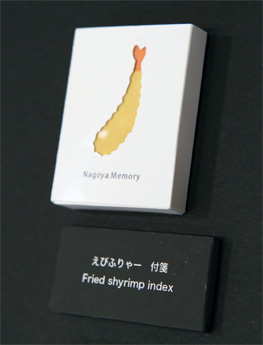

Nagoya Souvenir Collection:
Souvenirs that make you want to collect the whole set
We developed a series of souvenirs tempting multiple visits to Nagoya, to collect the whole set. We began with a “scarcity premium”, by attaching our souvenirs to particular locales or sightseeing spots, rather than making them available everywhere. Furthermore, we focused on stationery items, since everyone—regardless of age or gender—finds these things easy to buy.
Colored pencils
Japan’s earliest known pencils were among the articles of shogun Ieyasu Tokugawa (1543 –1616). We followed suit by making our pencils the same length (117mm, or 4.6”). We then represented various sightseeing spots of Nagoya with different colors.
Stationery series
We designed pictograms for the individual places of interest, and, including both color and motion born of interaction, applied them to original tags, erasers, paperclips, pencil sharpeners and correction tape.
Each souvenir package in the series includes a map of the city, a subway map and information on history, points of interest, fun places and Nagoya meshi [unique Nagoya foods]. We also included a memo page where visitors can jot notes about places they’ve been. We made the package postcard sized so that visitors can mail it as a gift, perhaps with a message. We propose this new style of souvenir, a collectible series that will bring people to Nagoya again and again, broadening their knowledge of our city.
Nagoya University of Arts: Yoshiyuki Wada
Frankly speaking, I’m relieved to have finished this six-month souvenir project. From the start of the project, we conducted market research and engaged in group discussions, and as the design process progressed, we came to recognize which positions best displayed the strengths of each member, and our teamwork naturally improved.
We performed quite a few intermediate assessments, asking ourselves whether this or that idea would encourage us to buy the item or not; revisions accrued, and when the ideas were slow in coming, we made delicious meals and enjoyed them together. Then we went back to work exchanging ideas, creating prototypes on the spot, accumulating analyses, and night after late night, my car served as the taxi home.
At the interim presentation, one of the design professionals told us that a design that was just above average wouldn’t do; He said, “The idea has to have overwhelming impact.” Everyone on our team was quite shocked by this advice, and we were all tremendously busy all the way up until installation day.
We were extremely motivated by the differing viewpoints and exquisite presentation skills of the members of the Kobe universities involved in this program. I hope that our students will grow even more, thanks to their experiences at this event.